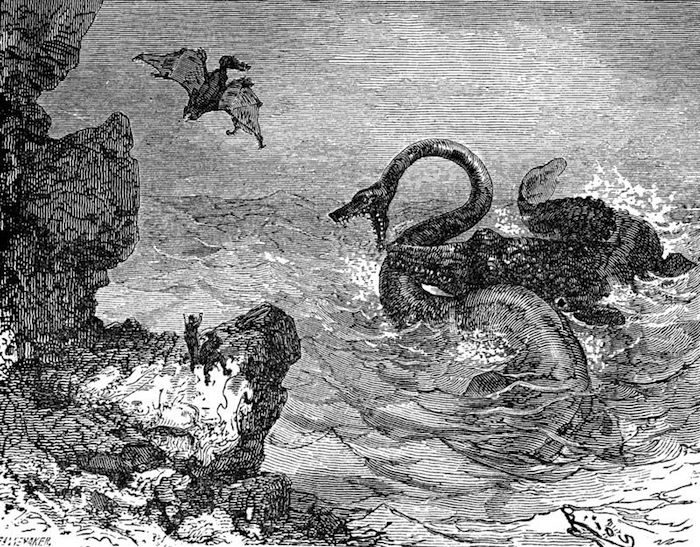
The Internet is awash in viral news sites trying to game social or search algorithms that try to attract eyeballs to the latest story that’s dominating users’ feeds. While many of these sites are run by shady characters, Spain’s largest newspaper, El País, has tried to create a site that marries the fun of viral sites with the trustworthiness of a legacy broadsheet.
The site, called Verne — after the author Jules Verne — features a mix of first-person narratives, explainers, quizzes, and native social videos.

“New directors [from El País and its parent Prisa] were eager to try out something new, they realized that there was a void to fill,” said Verne founder Delia Rodríguez, who is Univision Digital’s managing editor of audience engagement.
Verne launched in September 2014; in its first six months the website reached a peak of 6 million monthly unique users unique users, Rodríguez said. Verne declined to release current traffic figures. More than 60 percent of Verne’s traffic comes from social — especially Facebook.
The idea behind Verne is straightforward: coming up with stories that trigger emotions, that make people feel like sharing them. What sets Verne apart from other similar attempts to deliver viral news is how seriously it takes its mission: fact-checking sources and information, making sure it’s not being misled, and being honest with its audience.
“We shared a small newsroom culture,” Rodríguez recalled, “we were free to publish an absurd video, to laugh our heads off, we felt safe.”
Since Verne launched, its staff has doubled in size from its initial five staffers, who worked on a floor separate from the rest of the El País newsroom. Verne now has 10 employees, including two who work from Mexico.
In those early days, Verne relished the freedom of working separately from the main newsroom. They used blackboards to draw up new story formats and test out concepts. Now, Verne has matured, and its members are more integrated with the rest of the paper — sharing the same office space with the rest of El País newsroom, a result Verne’s reporters perceived as a natural evolution of its relationship.
“Verne has been like a lab to El País,” said Lucía González, who now leads Verne, and has been part of the team since the beginning. “We have incorporated new dynamics and different forms to achieve Internet reporting.”
El País says Verne is profitable, though it wouldn’t provide more details. It runs a mix of display and native ads, which are sold by El País’ commercial team. Native advertising is differentiated from news stories with a special layout, a label that states “sponsored content,” and a generic byline of “Verne” rather than a reporter’s name.

On the editorial side, Verne has helped El País reach new audiences and try out new story formats. “Verne deals with topics that El País wouldn’t traditionally cover, and Verne does so in a way that allows us to connect with a younger audience,” El País managing editor David Alandete Ballester said. That different approach has proved contagious, he said: “Verne has brought changes to the way we think about information at El País, and how we frame stories to make sure they have an impact on social platforms.”
After the March terror attack in London, El País of course covered the news with regular breaking news updates, but it also used a first-person narrative format pioneered on Verne to provide the perspective from a Spaniard who witnessed the attack.

First-person stories are just one of many Verne-inspired new formats. Verne’s creators put together a book they call the Bible that features best practices for headlines, story formats, and other ideas; it gets checked daily and added to with new ideas continually.
Verne staffers are encouraged to experiment on social platforms and in new mediums. The team works in a relaxed manner: They vote on the best headlines, and instead of selecting topics in morning editorial meetings, stories emerge during informal conversations among members of Verne’s team. Verne also publishes a handful of stories each day, focusing on quality over quantity.
“Verne’s DNA is all about testing stuff all the time,” said Verne reporter Mari Luz Peinado, who oversaw the launch of Verne Mexico. (Some articles are also translated into Brazilian Portuguese.) When it came to launching the Mexican site and training new staffers, Peinado focused the group’s culture, and the importance of headlines, storytelling, distribution and audience, listening constantly to what they say on social media.
As a result, Verne has learned that different types of stories perform better in each country. In Mexico, stories about social justice, sexism, and indigenous cultures are popular. In Spain, there’s a shared sensitivity to what happens to Spaniards abroad, the Spanish language, news from regions across Spain, philosophy, and data-driven narratives about cultural matters.
Verne is planning to also move into new platforms, especially messaging apps such as WhatsApp and Telegram. But no matter what, González said Verne will be ready for what’s next.
“We respect the Internet, learn by doing and we are very flexible because this area is in constant change,” she said.